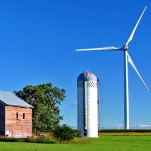The Arctic Tundra Used to Store More Carbon Than It Released. Not Anymore.
Photo by Lisa Hupp/USFWS
It has long been clear that the polar regions are warming at a faster rate than the rest of the planet. For decades, “twice as fast” was the refrain, but it’s worse than that: a 2022 study pegged the number at four times as fast as the average. The changes to Arctic and Antarctic ecosystems this rapid warming is causing are, at the risk of understatement, alarming.
“Our observations now show that the Arctic tundra, which is experiencing warming and increased wildfire, is now emitting more carbon than it stores, which will worsen climate change impacts,” said NOAA administrator Rick Spinrad, in a press release accompanying the 2024 Arctic Report Card, the agency’s annual look at what is happening in the far north. These are always grim exercises these days, of course; but that shift from sink to source is disturbing.
-

-

-

-

-

-

-

-

-

-

-

-

-

-

-

-

-

-

-

-

-

-

-

-

-

-

-

-

-

-

-

-

-

-

-

-

-

-

-

-

-

-

-

-

-

-

-

-

-

-

-

-

-

-

-

-

-

-

-

-

-

-

-

-

-

-

-

-

-

-

-

-

-

-

-

-

-

-

-

-

-

-

-

-

-

-

-

-

-

-

-

-

-

-

-

-

-

-

-

-

-

-

-

-

-

-

-

-












































































































